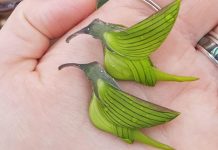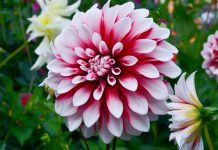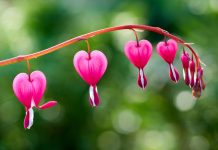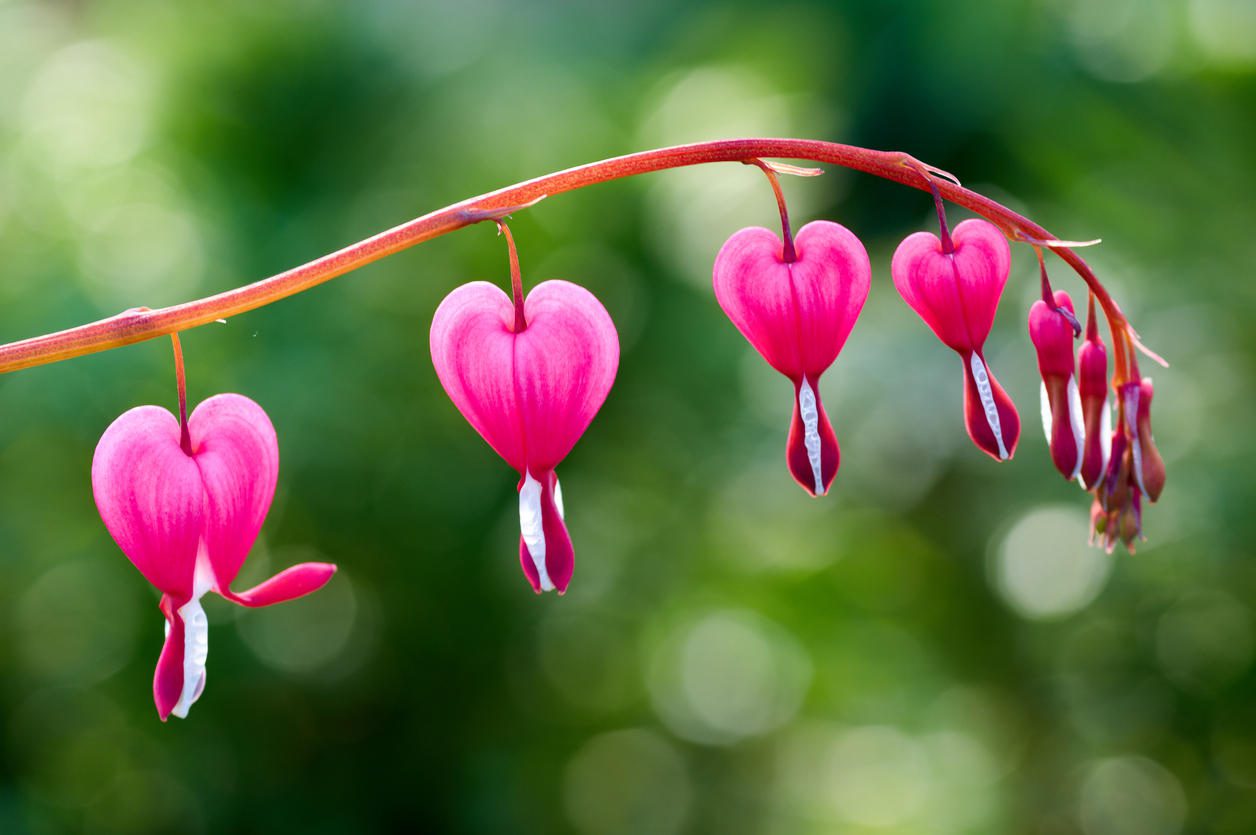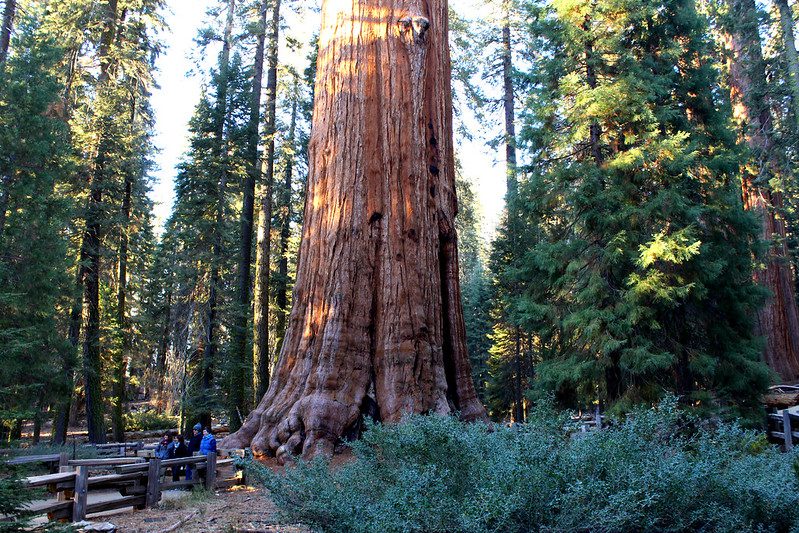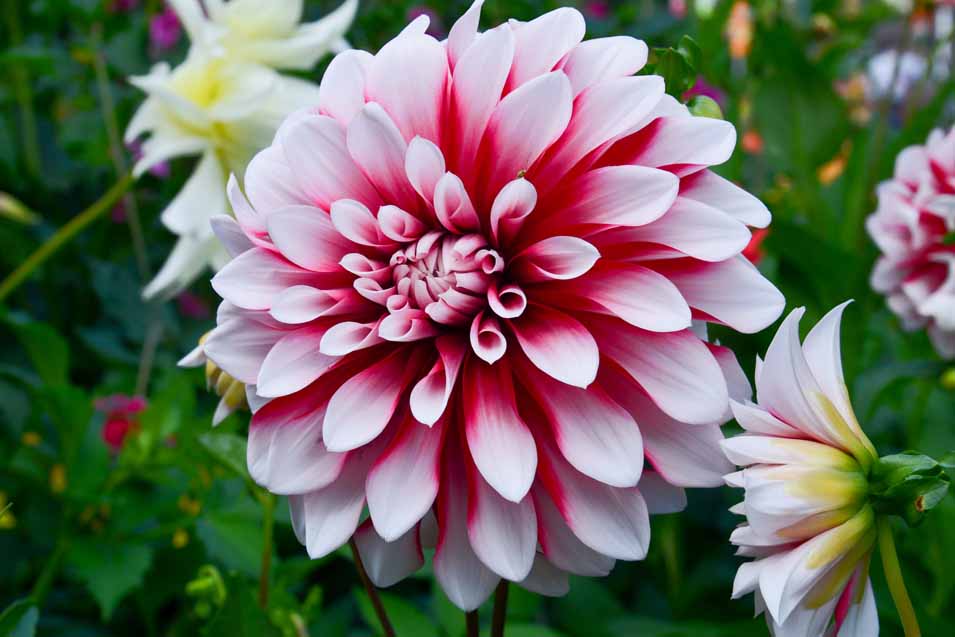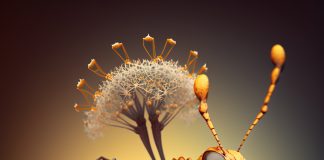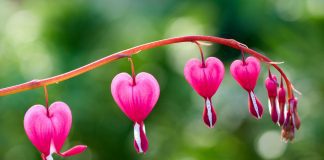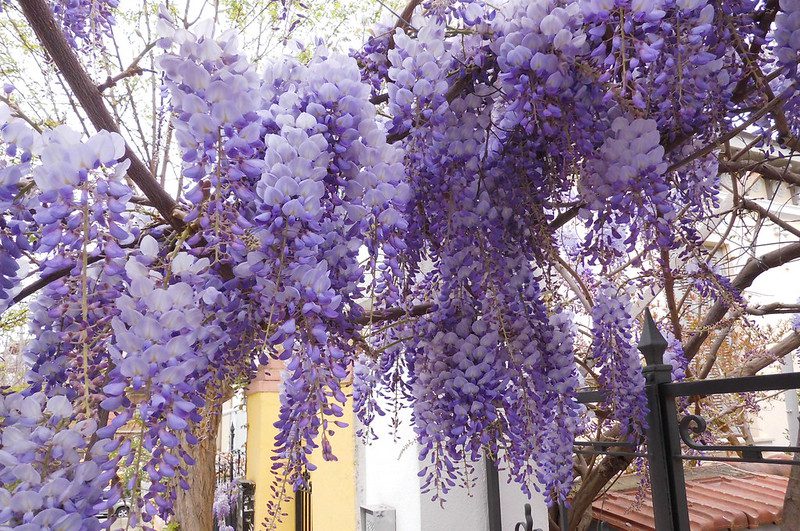
Introduction To Wisteria
Wisteria is a beautiful climbing plant that has been popular for centuries. It is native to Asia and parts of the United States, and its stunning purple flowers have made it a popular choice for gardens and landscaping.
It is a fast-growing plant and can reach heights of up to 30 feet, making it a perfect choice for covering fences, trellises, and walls.
It is important to note that the vine can be aggressive and even invasive in some areas, so it is essential to research your local climate and conditions before planting. However, it can be a stunning addition to any garden with proper care and attention.
Classification
- Common Name: Wisteria
- Scientific Species Name: Wisteria sinensis (Chinese wisteria), Wisteria floribunda (Japanese wisteria), Wisteria frutescens (American wisteria)
- Genus: Wisteria
- Class: Magnoliopsida
- Family: Fabaceae (pea family)
- Order: Fabales
- Subphylum: Tracheophyta
- Phylum: Spermatophyta
- Kingdom: Plantae
15 Facts About The Wisteria Plant
- Wisteria is a popular ornamental plant that is native to China, Japan, and the United States.
- Wisteria is known for its beautiful, fragrant flowers, which are typically purple, pink, or white in color.
- The flowers of the wisteria plant grow in long, hanging clusters, giving the plant a distinctive appearance.
- Wisteria is a woody vine that can grow up to 30 feet in length, making it well-suited for use as a climbing plant.
- The wisteria plant has been cultivated for centuries and has a long history of use in traditional medicine and landscaping.
- The wisteria plant is known for its hardiness and ability to thrive in a variety of conditions, but it does require regular pruning to control its growth.
- Wisteria is a fast-growing plant and can quickly become invasive if not properly controlled.
- The wisteria plant produces bean-like pods that contain seeds, which can be dispersed by wind or water.
- The wisteria plant is toxic to humans and animals if ingested, and care should be taken to keep it away from children and pets.
- The wisteria plant is a popular subject in art and literature and is often used as a symbol of love and longevity.
- The wisteria plant is drought-tolerant and can survive in dry conditions, but it prefers moist soil and regular watering.
- The wisteria plant is a legume, meaning it is able to fix nitrogen from the air and enrich the soil in which it grows.
- There are several different species of wisteria, including Chinese wisteria (Wisteria Sinensis), Japanese wisteria (Wisteria floribunda), and American wisteria (Wisteria frutescens).
- The wisteria plant has long been used in traditional Chinese medicine to treat a variety of ailments, including muscle pain, asthma, and fever.
- The wisteria plant is a popular choice for bonsai due to its ability to adapt to small pots and its beautiful flowers.
History Of Wisteria
Wisteria (W. Sinensis) was first discovered by Jesuit missionaries traveling through China during the 16th century. They noticed the plants growing along the banks of rivers and streams and brought them back to Europe.
In the 17th century, these plants became very popular because they had medicinal properties. They were used to treat fever, coughs, and other respiratory problems.
In the 19th century, Wisteria became more widely known when it was featured on postcards and prints. This helped to make it one of the most popular vines in America.
Today, the vine is still a favorite among homeowners and gardeners alike. It is easy to grow and requires little maintenance.
Types of Wisteria
The vine is a beautiful flowering vine that can add elegance and charm to any home or garden.
There are many types of Wisteria, each with its distinct features. The most common types are Japanese Wisteria (Wisteria floribunda), Chinese Wisteria (Wisteria Sinensis), and silky Wisteria (Wisteria Stachybotrys).
- American Wisteria (Wistaria Americana) is also available but is not as commonly grown. It is mainly grown in North America. The flowers are usually white, although some cultivars have pink or purple blooms. The plant leaves are dark green and glossy with a velvety texture. They grow in clusters at the end of branches. The flowers bloom from late spring to early summer in North America. In addition to its beauty, this plant has many uses. It can be used for hedges, screens, and privacy screens. It is also an excellent source of nectar for bees and butterflies.
- Japanese Wisteria is the most popular type due to its beautiful, cascading flowers. The flowers are typically purple or lavender and have a strong, sweet fragrance. Japanese Wisteria can grow quite large, reaching up to 30 feet in length.
- Chinese Wisteria is also popular and famous for its stunning blue flowers. Chinese Wisteria can grow slightly more petite than Japanese, reaching up to 25 feet in length.
- Silky Wisteria is less common but is still sought after for its beauty. It has white or pale pink flowers with a softer, less noticeable fragrance. Silky wisteria vines are not as long as Japanese or Chinese wisterias, only reaching up to 15 feet in length.
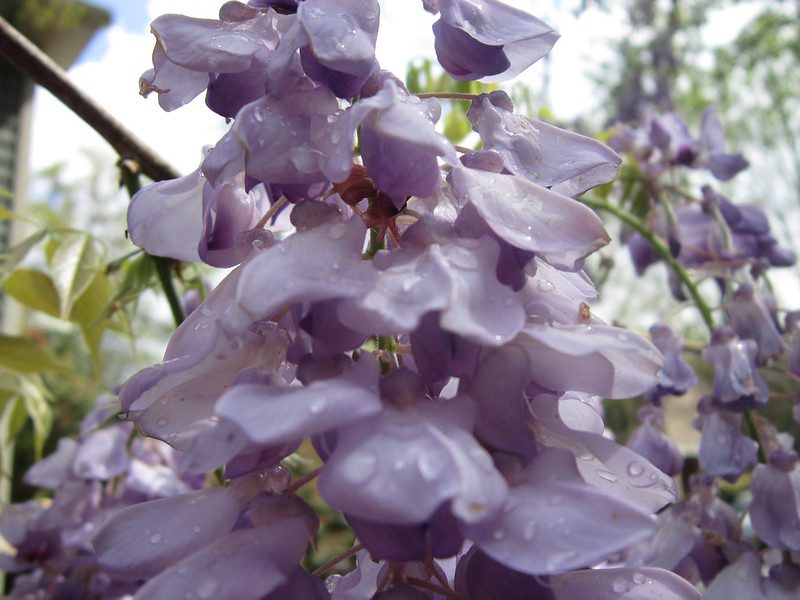
American Wisteria
American Wisteria (Wistaria Americana) grows best in full sun and well-drained soil. It prefers temperatures between 50°F and 80°F. It does not tolerate frost.
Japanese Wisteria
Wisteria is a genus of plants in the legume family Fabaceae. About ten species of Wisteria are native to China, Korea, and Japan. Wisteria is a climbing plant that can reach up to 30 feet in height. It has lush green leaves and beautiful flowers in various colors, including white, purple, pink, and blue.
The flowers are very fragrant and bloom in the spring. Wisteria is a popular plant in Japan, and it is known as fuji. The plant is native to the island of Kyushu and was introduced to the mainland in the 8th century.
Wisteria is mentioned in many ancient texts and artwork and is said to be the favorite flower of the samurai warrior. The plant is still trendy in Japan today and can be seen growing on trellises and roofs throughout the country.
Chinese Wisteria
Chinese Wisteria (Wisteria Sinensis) is a beautiful climbing plant often seen in gardens and parks. The plant has long, cascading flowers in various colors, including white, purple, and pink.
Chinese Wisteria is native to China and was introduced to Europe and North America in the early 19th century. The plant is considered invasive in many parts of the world because it can grow rapidly and choke out other plants. Chinese Wisteria can also damage buildings and structures because of its aggressive growth habit.
Silky Wisteria
Wisteria (W. Sinensis) is a beautiful climbing plant native to Asia. It has been grown in China for centuries and was brought to Japan in the 8th century. The plant is now found in many parts of the world, including the United States.
Wisteria grows best in full sun and moist, well-drained soil. It can be challenging to control due to its vigorous growth habit. Once established, Wisteria can be very long-lived.
The plant produces clusters of fragrant flowers that can be pink, purple, or white. Long, bean-like seed pods follow the flowers.
Wisteria can be used as a focal point in the landscape or trained to grow on a trellis or arbor. It is essential to prune Wisteria regularly to promote flowering and control its size.
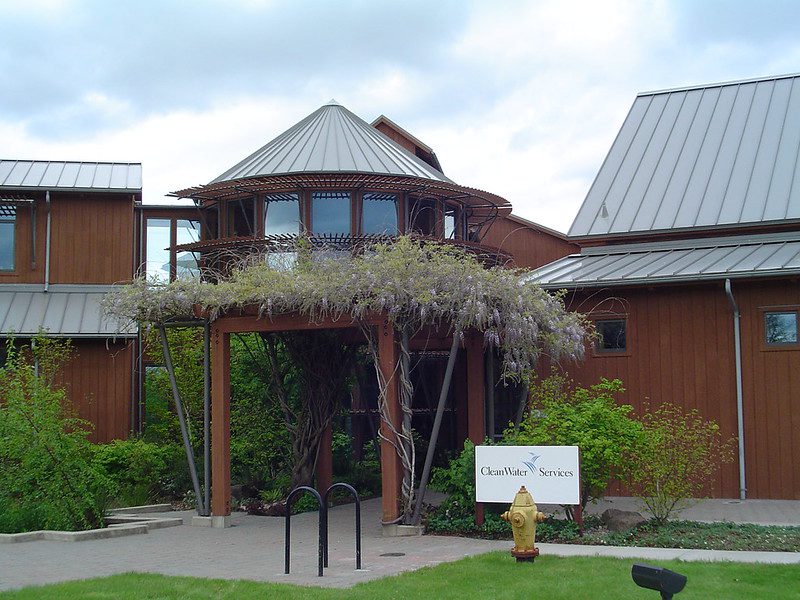
Wisteria Care
Although Wisteria is a vigorous climber, it is relatively easy to care for once it is established. Here are a few tips on how to keep your Wisteria healthy and looking its best. Wisteria prefers a sunny location with well-drained soil.
It can be planted in spring or fall. When planting, amend the soil with compost or other organic matter to help improve drainage.
Wisteria roots are very sensitive to wet conditions, so the planting location mustn’t stay soggy. Prune Wisteria in late winter or early spring before new growth begins. The plant produces flowers on last year’s wood, so pruning helps to encourage flowering.
To control the plant’s vigor and keep it from taking over your garden, prune it hard each year. This will also help to promote flowering. Wisteria can be susceptible to various pests and diseases, but these problems are generally not serious and can be easily controlled with proper care.
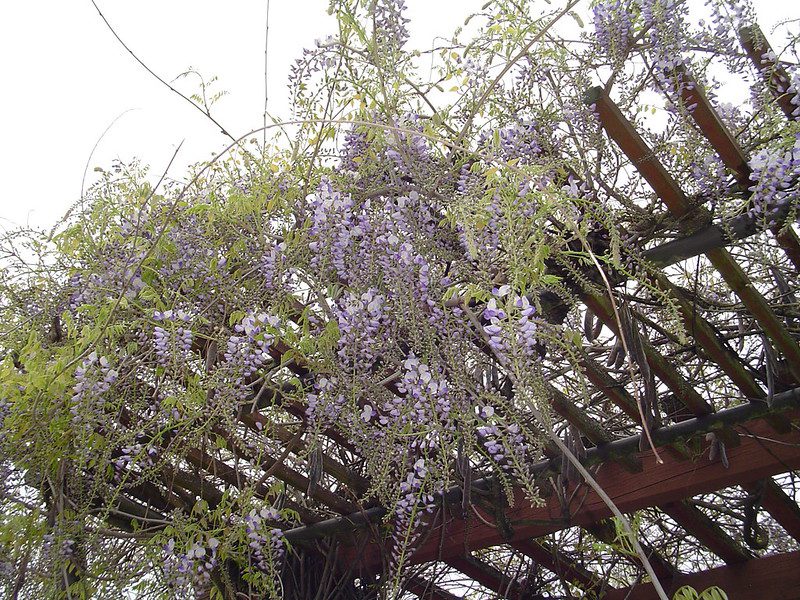
How to Plant Wisteria
Here are some tips on how to plant Wisteria:
- Choose a sunny spot. It thrives in full sun, so pick a place in your garden with plenty of sunlight.
- Prepare the soil. It prefers well-drained soil, so amend it with compost or other organic matter.
- Plant the Wisteria. Dig a hole twice as wide as the roots of your wisteria plant. Place the plant in the hole and backfill it with soil, tamping down lightly. Water thoroughly after planting.
- Train the vines. Once your wisteria plant is established, you’ll need to train the vines to grow in the desired direction. You can do this by tying them to a support structure (such as a trellis or pergola) with soft twine or thin strips of cloth.
With proper care, your Wisteria will thrive and provide you with years of enjoyment!
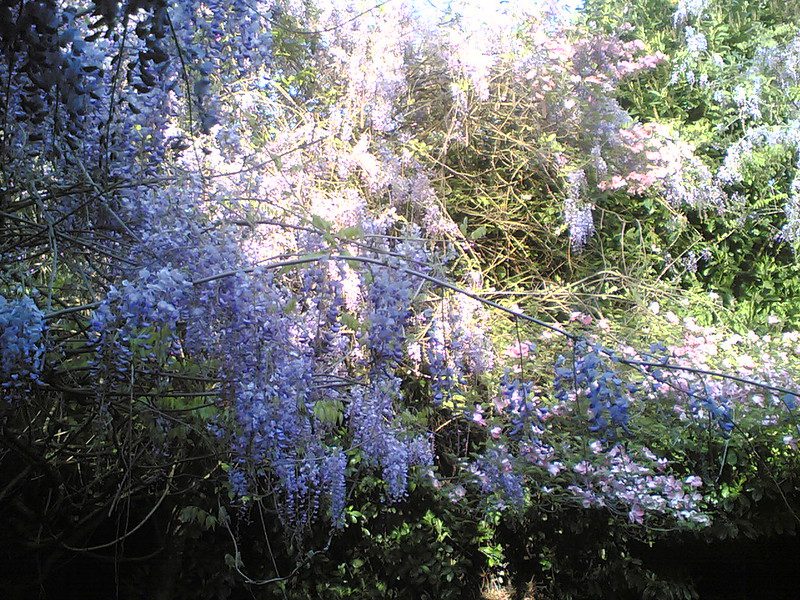
Growing Tips
Wisteria (W. Sinensis) is easy to care for and maintain. All you need to do is provide adequate sunlight and water. If your Wisteria starts looking droopy, give it a good soaking. You can use a hose or even a bucket filled with water. Be sure to keep the water away from the roots so it doesn’t cause damage.
Remove the affected parts immediately if you notice any signs of disease, such as brown spots, blackened areas, or wilting. Please do not allow them to dry out. Remove all dead foliage and cut back on watering if necessary.
You may want to fertilize your Wisteria every two weeks during the growing season. Apply fertilizer according to the directions on the package. Follow the label instructions carefully.
It would be best to prune your Wisteria when it reaches about 6 inches tall. This will encourage new growth and help prevent the plant from becoming leggy. Pruning is done by cutting off the old stems just below the first set of leaves. Make sure to leave enough healthy new shoots behind.
When planting Wisteria, make sure that the root ball is firmly planted. Wisteria needs plenty of room to spread out. Planting too close together can lead to overcrowding.
Re-pot your Wisteria every three years. When repotting, dig up the entire plant and gently loosen the potting mix around the roots. Take care not to disturb the roots. Then, place the plant into a larger container. Add more soil until the top of the pot is level with the top of the roots. Water thoroughly.
Re-potting allows you to move your Wisteria to a different location without damaging the roots. Moving your Wisteria requires digging up the whole plant and moving it to a new spot.
How to Care for Wisteria
Here are a few tips on how to care for Wisteria:
- Prefers full sun but will tolerate partial shade. Plant your Wisteria in an area with at least six hours of direct sunlight daily.
- Needs well-drained soil. Mix in sand or organic matter to improve drainage if your soil is heavy or clay-like.
- Water regularly, especially during the first few years after planting. Once established, Wisteria is relatively drought tolerant.
- Fertilize once a year in early spring with a balanced fertilizer.
- Prune annually in late winter or early spring before new growth begins. Cut back the previous year’s growth to about two or three buds from the main stem.
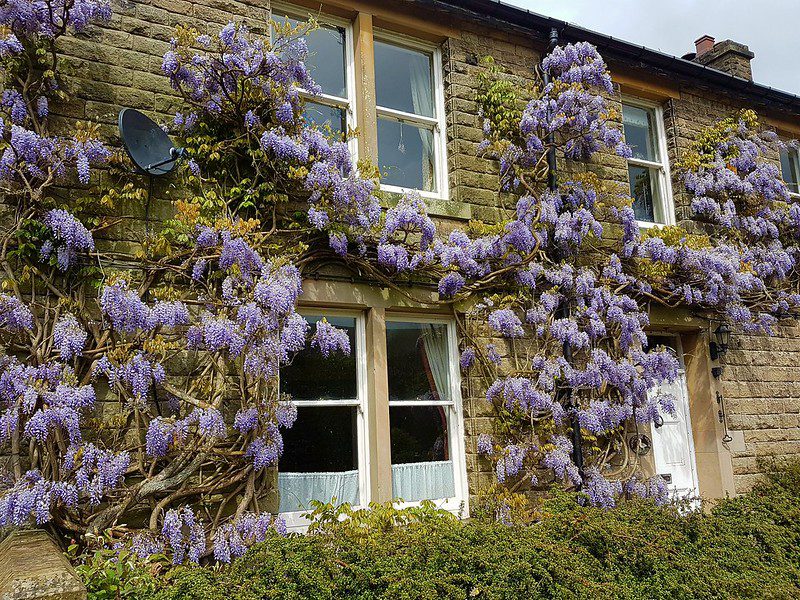
How to Prune Wisteria
Pruning wisteria (W. Sinensis) is vital to controlling this fast-growing climber. Although Wisteria can be left to its own devices, it will quickly become a tangled mess if not pruned regularly.
The best time to prune is in late winter or early spring before the plant starts to produce new growth. Cut back all of the previous year’s growth to within 10-15cm (4-6in) of the main stem. This may seem drastic, but don’t worry – Wisteria is a resilient plant that will quickly recover.
Once the plant has started to produce new growth, you can give it a light trimming every few weeks to keep it tidy. If you want to encourage your Wisteria to flower, you will need to provide it with more severe pruning in midwinter.
Cut back all lateral (side) shoots to around 30cm (12in) from the main stem. This may seem harsh, but the plant must put all its energy into producing flowers rather than foliage.
Wisteria beans
Wisteria beans are small round green seeds that grow inside pods. They look like peas, but they are actually legumes. The plant grows up to 10 feet tall and has fragrant white flowers. The leaves are dark green and oval-shaped.
Wisteria beans are poisonous when eaten raw or cooked. They contain glycosides which cause vomiting and diarrhea. The seeds also contain a cyanogenic glucoside, which breaks down into hydrogen cyanide gas when heated. Hydrogen cyanide gas causes headaches, dizziness, nausea, weakness, and unconsciousness.
Common Pests and Diseases of Wisteria
Despite its beautiful flowers and vigorous growth, it is susceptible to several pests and diseases, including
- Aphids
- Scale
- Whiteflies
Pests and diseases can cause stunted growth and deformed leaves and transmit diseases from one plant to another.
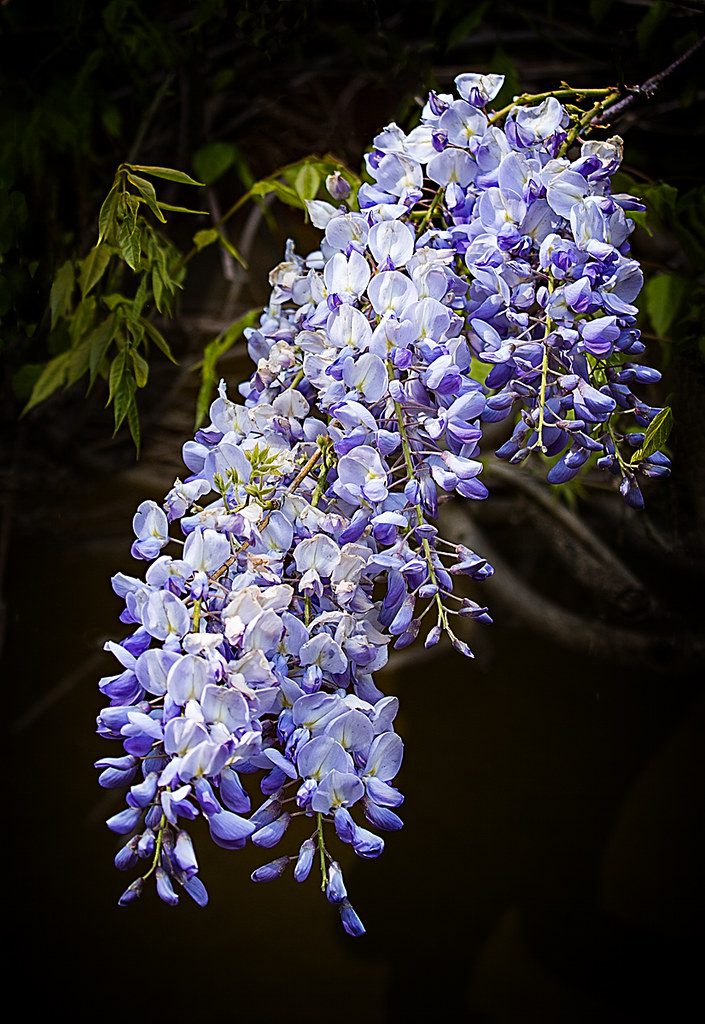
Where to buy wisteria plants (W. Sinensis)
Now that you know what to look for, where can you buy wisteria plants? There are a few different options:
- Online nurseries: Many online nurseries sell wisteria plants. Search for the wisteria plant or tree, and you’ll find several options.
- Local nursery: This is a good option if you want to see the plant in person before buying it. You can also ask the staff for advice on how to care for your Wisteria.
- Online retailer: Many online retailers sell wisteria plants. This is a good option if you know exactly what type of plant you want and don’t need to see it in person beforehand.
- Mail order: You can also order wisteria plants from catalogs or mail-order companies. This is a good option if you’re having trouble finding the plant you want locally.
- Websites like eBay have a lot of online sellers for this plant, such as wisteria seeds and live plants, as well as books and tutorials.
If you’re looking to add a wisteria plant to your garden, there are a few things to keep in mind.
First, make sure you have enough space for the plant to grow. Wisteria can grow up to 30 feet in length, so you’ll need a spot that can accommodate its size.
Second, consider the type of Wisteria you want.
Third, choose a planting location that gets full sun.
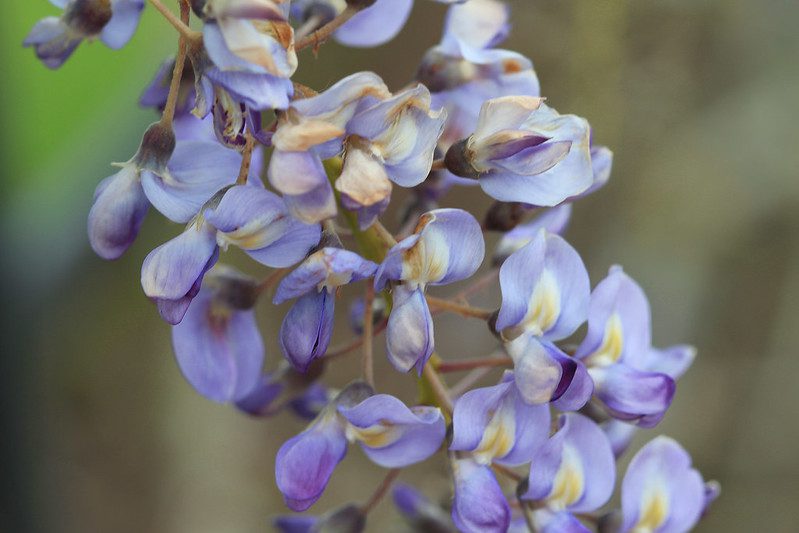
Wisteria needs at least six hours of sunlight each day to thrive. Fourth, ensure a support structure for the plant to climb on. The vine can be trained to climb on trellises, arbors, fences, or any other sturdy support.
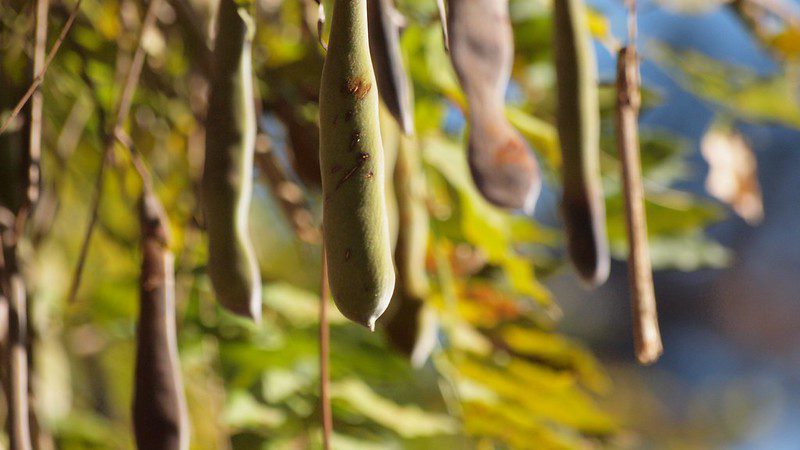
The wisteria flower (W. Sinensis)
The wisteria flower is a thing of beauty. Delicately hanging from its branches, it symbolizes grace and elegance. But the vine is more than just a pretty face. It is also one of the most versatile climbers in nature. A native of China, the Wisteria was first introduced to Japan in the 8th century.
Since then, it has been widely cultivated throughout Asia and the rest of the world. The vine can be found in various colors, including white, pink, purple, and blue. Wisteria is a fast-growing plant and can reach heights of up to 30 feet (9 meters). It has a robust root system that allows it to climb walls and other structures with ease.
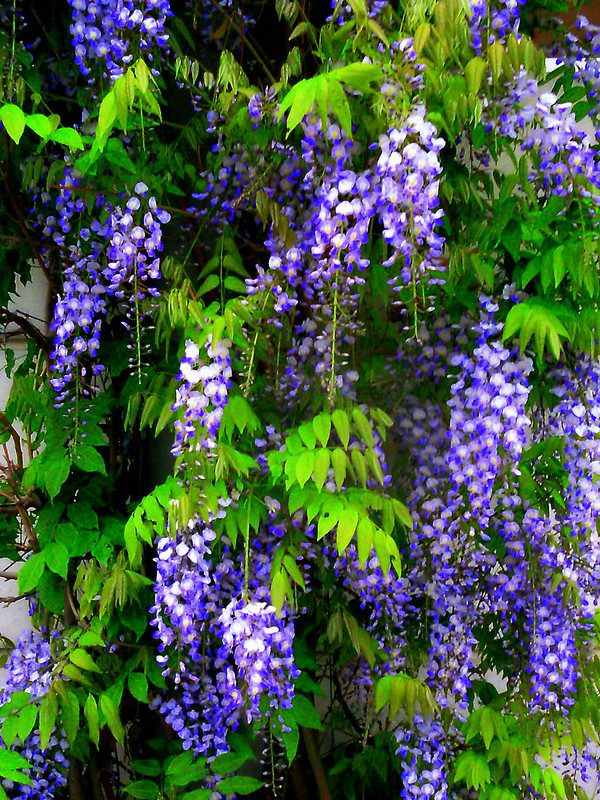
Wisteria is also known for its fragrant flowers, which bloom in the springtime. While Wisteria is a beautiful plant, it can also be destructive. The plant’s roots are known to damage foundations and sidewalks.
The plant’s vines can also strangle trees and power lines if left unchecked. Wisteria remains a popular plant despite its drawbacks due to its beauty and versatility. The Wisteria can be a stunning addition to any home or garden with proper care and maintenance.
People also ask
Is Wisteria poisonous to dogs?
Wisteria is toxic for dogs, so do not let them eat parts of the plant. If they lick the leaves, wash them off immediately. Make sure that the dog has access to clean water at all times.
Is Wisteria poisonous to touch
Wisteria is not dangerous to touch, although some people may be allergic to pollen. However, washing your hands after handling the flowers is essential since they contain latex sap, which can cause skin irritation.
What is a good companion plant for Wisteria?
A few different types of plants make good companions for Wisteria. One option is to plant Wisteria with climbing roses. This combination can create a beautiful and romantic look in your garden.
Another option is to plant Wisteria with clematis. This combination is also beautiful, and the clematis will help support the vine as it climbs. Finally, you could plant Wisteria with trumpet vines. This combination is not as expected, but it can be very striking.
Is Wisteria a tree or a vine?
Wisteria is a climbing plant that has beautiful flowers. The flower looks like a cluster of grapes hanging from the branches. Wisteria is also known as “wisent,” which means “white wine.”
What does Wisteria smell like?
It has fragrant flowers, which are often used to scent floral arrangements. The flowers of this plant have been described as having “a sweetly intoxicating fragrance.”
What to feed Wisteria?
Wisteria needs a lot of water and sunlight. If you don’t give them enough sun, they won’t bloom. They also need rich soil, so add some compost to the pot. Feed them once a week with a fertilizer containing nitrogen, phosphorus, potassium, magnesium, calcium, sulfur, iron, manganese, zinc, copper, molybdenum, and chlorine.
Where should you plant Wisteria?
The best place for Wisteria is near a window, where they receive plenty of sunlight. They also like to be planted next to other plants, such as azaleas, rhododendrons, and magnolias. If you don’t want to grow the vine, you can purchase some from a florist.
What causes a wisteria not to bloom?
If an established wistaria is given too much fertilizer, it will use up all its energy growing instead of producing flowers. You could also have bud injury or damage or incompatible growing conditions.






































